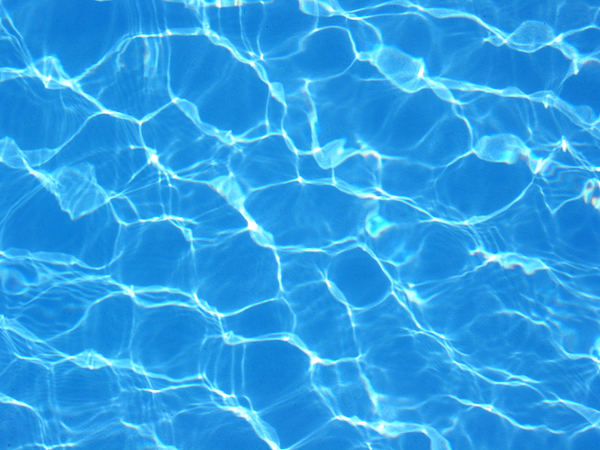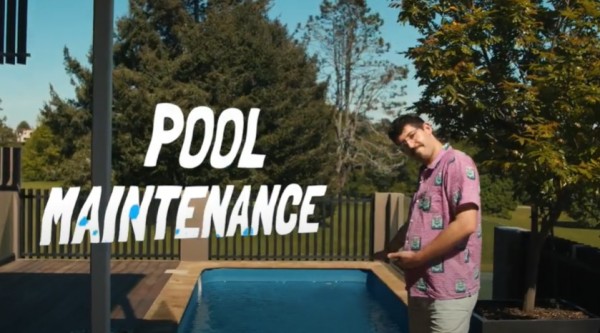TOP TEN TIPS
- Use a pool cover & prevent up to 97% evaporation - you won't need as many chemicals to treat the water.
- Before getting into the pool, rinse your dirty feet in a small tub.
- Check your pool for leaks. A tiny leak can lead to a substantial amount of water loss
- Maintain the correct chemical balance & if it starts to look cloudy, take action straight away. Take a water sample to your local pool or DIY store and get it tested.
- Brush sides and bottom of pool once a week to remove algae build-up. By moving algae away from the sides, it's easier to be cleaned with chlorine and through the filter.
- Top up your pool with rainwater runoff.
- When purchasing a new pool filter, look for a water efficient model that doesn't require backwashing e.g. a cartridge filter. Simply rinse the filter with a tap or hose and put back.
- Make sure your pool is fenced to the right regulations - if your pool is deeper than 400mm, it must be fenced appropriately to avoid accidental drowning. See Hamilton pool fencing rules; Waipa pool fencing rules; Waitomo pool fencing rules PDF.
- How to take a water sample - watch the video. Fill a small bottle with your pool water, leaving no air at the top. Make sure it's no older than 1 hour and out of the sun. Find out the volume of your pool (litres). If unsure, check the pool particulars online or use length x width x depth calculation.
- Ensure you have an efficient filter and pump system which is at the heart of keeping pool water clean. You may need to consider an upgrade.
MAINTAINING WATER LEVELS
- Don't overfill the pool. Lower water levels will reduce water loss due to splashing.
- Make sure the water level in your pool is only halfway up the skimmer box. Overfilling the pool stops the skimmer from working efficiently and wastes water.
- Reduce your consumption of treated water by topping up your pool or spa with water from a rainwater tank or downpipe diverter.
Backwashing
- Backwashing typically accounts for 30% of a pool's water use. Make sure your backwash cycles are kept to a minimum and are in accordance with the manufacturer's specifications.
- Backwashing too frequently wastes water, while not backwashing enough wastes energy by forcing the pump to work harder.
- Where possible, backwash after heavy rainfall (when you would usually need to lower the water level of your pool).
DESIGNING YOUR POOL AREA
If you are in the process of designing or intend to redesign your pool area, there are things you can do to improve water efficiency and reduce energy costs.
- Strategic placement of trees and shrubs can give your pool protection from wind, helping to reduce evaporation. Consider planting or constructing windbreaks in any direction where your pool is exposed to strong winds.
- Install a rainwater tank to collect water for use in your pool, garden or home. If rain is forecast, wait for the pool to refill naturally.
Source:
https://www.qld.gov.au/environment/water/use/home/pool © State of Queensland, 2014.

Are you being pool-wise?
Do you own or are thinking of buying a seasonal portable pool or paddling pool? Test your pool knowledge and be in the know this summer.
Pool quizLeaks
Checking for leaks is an important part of a pool owner's maintenance routine. A tiny leak could result in a large amount of water loss. Signs of a leak include:
- A rapid drop in water level
- Unusually rapid algae formation soon after chemical treatment
- Loose tiles or a cracked pool deck
- Gaps and cracks in the pool shell
- Ground sinking around the pool structure
- Constantly damp soil around the pool or house.
If the water level of your pool drops more than 3 centimetres within 24 hours, investigate for problems and consult a professional. If you suspect that your pool is leaking, follow these steps:
- Place a bucket filled with water on a pool step (weight it with a rock or brick). Mark the water level on both the inside and outside of the bucket. The starting points should be about the same. Check the water levels against the marks 24 hours later. You may have a leak if there is a greater drop in the water level on the outside of the bucket.
- Check the skimmer. Skimmer leaks are quite common and are caused by a separation between the plastic skimmer and the concrete pool. This leak looks like a crack, gap or tear and is easily repaired with pool putty.
- Check for leaks in the pump and filter equipment and on the shell of the pool, around inserts into the pool walls (for example lights) and at wall interfaces (for example tile lines).
- Check the return lines when the pool pump is running. If there are bubbles, there may be a leak in the suction side of the filtration system. Once you have detected a leak, make sure you repair it quickly!
Pool & Spa covers
Fit your swimming pool or spa with a cover. A cover prevents up to 97% of water evaporation, decreasing the amount of water and chemicals that you need to maintain your pool or spa.
